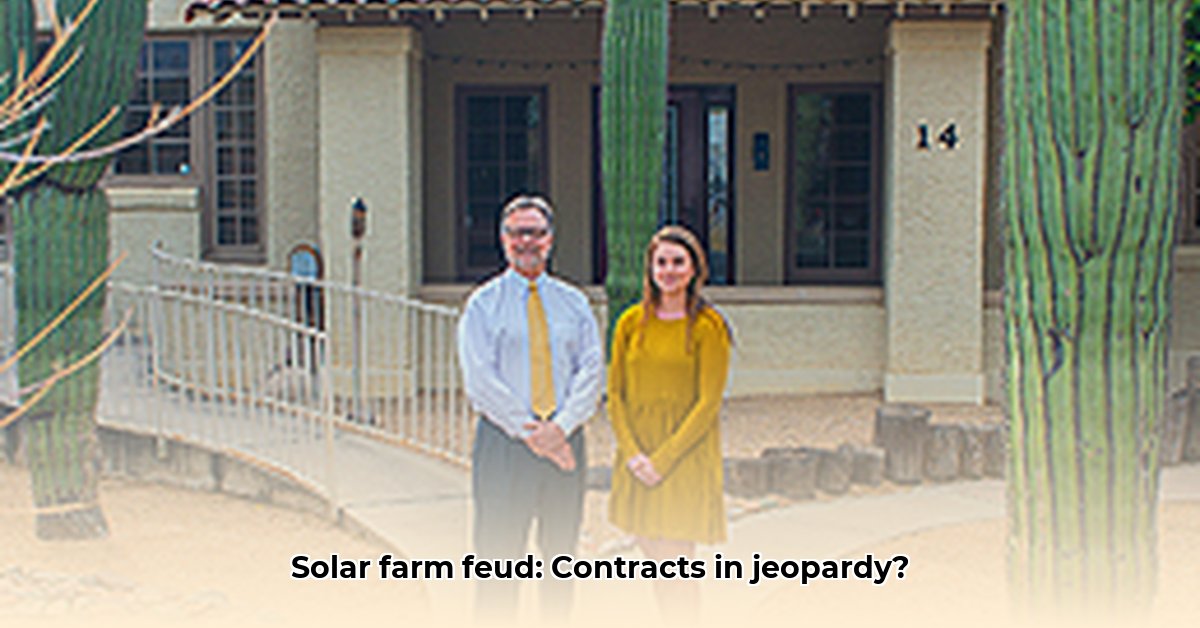
The City of Industry v. San Gabriel Valley Water & Power: A Case Study
This case study analyzes the legal dispute between the City of Industry and San Gabriel Valley Water & Power (SGVWP) concerning a substantial solar farm project. The case highlights significant issues in contract law, fraud, and the application of the California False Claims Act, offering valuable insights into the risks and regulatory implications for future solar energy projects. The potential involvement of John Gilmore's law firm adds another layer of complexity to this already multifaceted legal battle.
Background: The Genesis of the Dispute
The core of the dispute centers around a master ground lease agreement governing the development and operation of a large-scale solar farm. The City of Industry alleges that SGVWP, the project developer, submitted fraudulent invoices seeking reimbursement for work that was either never performed or significantly over-billed. This claim is based on what the City argues are inconsistencies between project milestones, the actual work completed, and the amounts charged on the invoices. SGVWP vehemently denies these allegations, maintaining that all invoices accurately reflect completed work and comply with the terms of the master ground lease. The relationship between the City and SGVWP, initially characterized by collaboration, deteriorated significantly as disputes arose regarding the invoices and their legitimacy.
Key Legal Issues: Defining the Contested Terrain
The legal battle hinges on several key issues. First, the City's claim of breach of contract rests on its assertion that SGVWP violated the terms of the master ground lease by submitting false and misleading invoices. Second, the allegation of fraud requires demonstrating an intent to deceive on the part of SGVWP, a high legal hurdle. Third, the potential application of the California False Claims Act adds another layer of complexity. This act targets fraudulent claims against public entities, and its application hinges on whether the City can prove that SGVWP knowingly submitted false claims for payment. Key legal terms such as "related work," "reasonable costs," and "intent to defraud" are central to the interpretation of the contract and the success of the City’s claims.
Analysis of Arguments: Weighing the Evidence
The City of Industry's arguments center on the presentation of evidence purporting to show discrepancies between the invoices and the actual work performed. This evidence likely includes detailed project documentation, comparing invoice line items to project milestones and actual progress. The City will also seek to present witness testimony supporting its claim of fraudulent intent. SGVWP, in contrast, will defend by presenting its own documentation, potentially including supporting records, project invoices, and financial reporting. They maintain that the City’s accusations lack merit and are a tactic to avoid fulfilling its contractual obligations. The strength of each party's evidence will be crucial in determining the outcome. The persuasive power of expert witnesses in areas like forensic accounting and solar energy project management will be vital in supporting the arguments of both sides.
Procedural History: Navigating the Legal Process
The procedural history of the case would include details on the filing of the lawsuit, any demurrers (objections to the sufficiency of the pleading) filed by either party, the filing of cross-complaints, and any motions for a stay of action (a temporary halt in proceedings). The timeline of these procedural events will be pivotal in understanding how the case has unfolded and what steps remain. A thorough overview of significant court rulings or pretrial motions made by either party is important.
Actionable Insights: Strategies and Potential Outcomes
The City of Industry may pursue a strategy focused on proving fraudulent intent, utilizing forensic accounting and witness testimony. SGVWP will likely counter by emphasizing the accuracy of their invoices and the legitimacy of their actions. The potential outcomes range from a complete dismissal of the City’s claims to a significant financial judgment against SGVWP. The involvement of John Gilmore's law firm could significantly influence these strategies and outcomes.
Risk Assessment: Evaluating the Stakes
The risks for each party are substantial. The City faces high legal costs and the possibility of failing to recover the misappropriated funds. SGVWP risks negative publicity, financial penalties, and reputational damage. The potential for long-term reputational harm and the impact on future contracts are critical considerations for both parties. Moreover, the length of the litigation process itself presents a significant risk for both sides, with mounting legal fees and protracted uncertainty.
Regulatory Implications: Setting Precedents
The outcome of this case will likely have wider implications for future solar farm contracts and the enforcement of the California False Claims Act. It could potentially establish new legal precedents regarding the burden of proof in fraud cases involving complex construction projects and the interpretation of contract clauses related to project costs.
Conclusion: An Uncertain Future
The City of Industry v. San Gabriel Valley Water & Power case presents a complex web of legal issues, highlighting the challenges of navigating large-scale infrastructure projects. The likely involvement of John Gilmore’s law firm, given their experience in complex commercial litigation and the California False Claims Act, adds another layer of analysis in assessing the potential outcomes. While a definitive prediction of the outcome is premature, a thorough review of evidence and legal precedents, along with an understanding of the litigation history, suggests potential scenarios, and allows for a reasoned assessment of each party's position. The case serves as a cautionary tale, emphasizing the critical importance of clear contracts, meticulous record-keeping, and robust due diligence in all aspects of renewable energy project development.